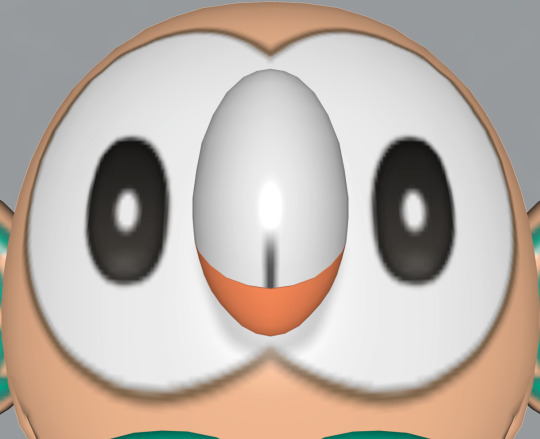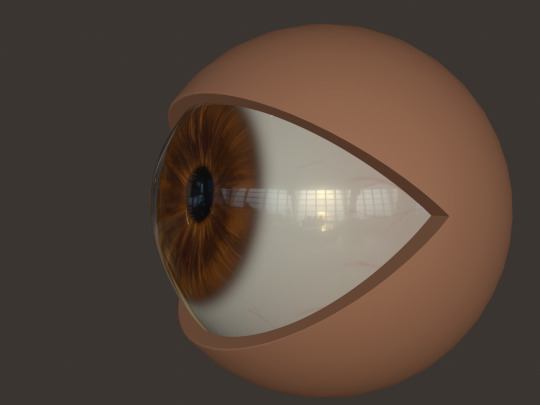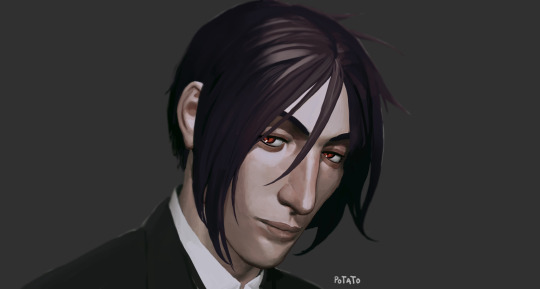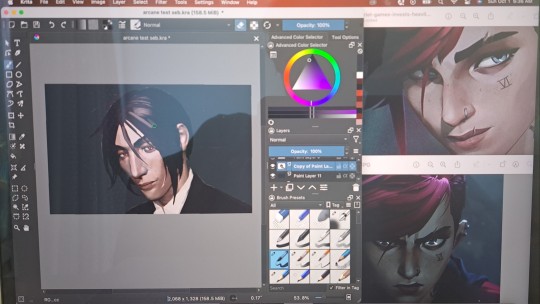#3d structure
Explore tagged Tumblr posts
Text
AI model can reveal the structures of crystalline materials
New Post has been published on https://thedigitalinsider.com/ai-model-can-reveal-the-structures-of-crystalline-materials/
AI model can reveal the structures of crystalline materials


For more than 100 years, scientists have been using X-ray crystallography to determine the structure of crystalline materials such as metals, rocks, and ceramics.
This technique works best when the crystal is intact, but in many cases, scientists have only a powdered version of the material, which contains random fragments of the crystal. This makes it more challenging to piece together the overall structure.
MIT chemists have now come up with a new generative AI model that can make it much easier to determine the structures of these powdered crystals. The prediction model could help researchers characterize materials for use in batteries, magnets, and many other applications.
“Structure is the first thing that you need to know for any material. It’s important for superconductivity, it’s important for magnets, it’s important for knowing what photovoltaic you created. It’s important for any application that you can think of which is materials-centric,” says Danna Freedman, the Frederick George Keyes Professor of Chemistry at MIT.
Freedman and Jure Leskovec, a professor of computer science at Stanford University, are the senior authors of the new study, which appears today in the Journal of the American Chemical Society. MIT graduate student Eric Riesel and Yale University undergraduate Tsach Mackey are the lead authors of the paper.
Distinctive patterns
Crystalline materials, which include metals and most other inorganic solid materials, are made of lattices that consist of many identical, repeating units. These units can be thought of as “boxes” with a distinctive shape and size, with atoms arranged precisely within them.
When X-rays are beamed at these lattices, they diffract off atoms with different angles and intensities, revealing information about the positions of the atoms and the bonds between them. Since the early 1900s, this technique has been used to analyze materials, including biological molecules that have a crystalline structure, such as DNA and some proteins.
For materials that exist only as a powdered crystal, solving these structures becomes much more difficult because the fragments don’t carry the full 3D structure of the original crystal.
“The precise lattice still exists, because what we call a powder is really a collection of microcrystals. So, you have the same lattice as a large crystal, but they’re in a fully randomized orientation,” Freedman says.
For thousands of these materials, X-ray diffraction patterns exist but remain unsolved. To try to crack the structures of these materials, Freedman and her colleagues trained a machine-learning model on data from a database called the Materials Project, which contains more than 150,000 materials. First, they fed tens of thousands of these materials into an existing model that can simulate what the X-ray diffraction patterns would look like. Then, they used those patterns to train their AI model, which they call Crystalyze, to predict structures based on the X-ray patterns.
The model breaks the process of predicting structures into several subtasks. First, it determines the size and shape of the lattice “box” and which atoms will go into it. Then, it predicts the arrangement of atoms within the box. For each diffraction pattern, the model generates several possible structures, which can be tested by feeding the structures into a model that determines diffraction patterns for a given structure.
“Our model is generative AI, meaning that it generates something that it hasn’t seen before, and that allows us to generate several different guesses,” Riesel says. “We can make a hundred guesses, and then we can predict what the powder pattern should look like for our guesses. And then if the input looks exactly like the output, then we know we got it right.”
Solving unknown structures
The researchers tested the model on several thousand simulated diffraction patterns from the Materials Project. They also tested it on more than 100 experimental diffraction patterns from the RRUFF database, which contains powdered X-ray diffraction data for nearly 14,000 natural crystalline minerals, that they had held out of the training data. On these data, the model was accurate about 67 percent of the time. Then, they began testing the model on diffraction patterns that hadn’t been solved before. These data came from the Powder Diffraction File, which contains diffraction data for more than 400,000 solved and unsolved materials.
Using their model, the researchers came up with structures for more than 100 of these previously unsolved patterns. They also used their model to discover structures for three materials that Freedman’s lab created by forcing elements that do not react at atmospheric pressure to form compounds under high pressure. This approach can be used to generate new materials that have radically different crystal structures and physical properties, even though their chemical composition is the same.
Graphite and diamond — both made of pure carbon — are examples of such materials. The materials that Freedman has developed, which each contain bismuth and one other element, could be useful in the design of new materials for permanent magnets.
“We found a lot of new materials from existing data, and most importantly, solved three unknown structures from our lab that comprise the first new binary phases of those combinations of elements,” Freedman says.
Being able to determine the structures of powdered crystalline materials could help researchers working in nearly any materials-related field, according to the MIT team, which has posted a web interface for the model at crystalyze.org.
The research was funded by the U.S. Department of Energy and the National Science Foundation.
#000#3d#3D structure#ai#ai model#American#applications#approach#arrangement#Artificial Intelligence#atoms#batteries#binary#box#carbon#ceramics#chemical#chemistry#Composition#computer#Computer Science#crystal#crystalline#crystalline materials#crystals#data#Database#Design#diamond#DNA
0 notes
Video
youtube
Human Body 3D Xray While Running #running #3danimation #3dmodeling #shorts
#youtube#3d#3d structure#human body structure#3d body structure#running man 3d structure#3d animation#body 3d animation#3d running animation fitnessmantram
0 notes
Text

#rowlet#welcome to the seventh generation. the things i do for you all. i just had to learn the structure of the code of collada files#so that i could stop making these bitches too shiny to see their eyes so that i could continue doing this#because i am a developer and not a 3d modeler#so it's easier for me to edit the code than it is for me to learn how to use fuckin blender#so i'm probably gonna write up a little script in python to Un-Shinify any models that i get to make it easier for me#but anyway! now that that's out of the way. this is probably one of my least favorite starters#just being honest. i like popplio a LOT and litten more than this at least#it's not that i dislike it‚ i just find that it's a little……… less. than the other two starters of this region#it's still cute and i like the sounds it makes. it is definitely a circle#and like that's awesome. but i like litten and popplio more :/ sorry to that one anon who hated all the water starters but also not sorry#they killed me like twenty billion times so i'm gonna like whatever water starters i want
233 notes
·
View notes
Text
*does the 3D equivalent of doodling a big sparkly eye in the margins of your class notes*

#3D#I've never done anything at this level of detail before and just wanted to see if I could#and then gave up at the prospect of sculpting individual eyelashes lmao#but yeah it turns out this isn't even all that hard#I drew the structure of the iris in procreate beforehand to use as an alpha (basically like a stamp in clay)#and the rest was just painting and some very minor sculpting#it was fun!#I want to say maybe next time I'll do an actual sparkly anime eyeball#but from what I've seen anime style 3D art keeps the features very simple and flat#so I'd just literally be drawing it anyway and there's nothing exciting to me about that#anyway! get beheld 👁️
86 notes
·
View notes
Text
sup yalllll hope you're all cool. things are crazy rn but. great too. finally got some free time and what do I do.....
I'm sorry to everyone that won't find this interesting, I did this like 100% for myself. this week I saw a presentation on the show Arcane, and I immediately rewatched it afterwards because after 2 years I remembered how much I love it. especially the art style... I'm sorry but I've always wanted to try it, and with my favorite characters even better. so good thing I had a Sebastian head sculpt lying around which I use for reference. 11 hours later.....


the head sculpt was bald and naked so I had to imagine the rest, but I think that kinda lends itself to the style. I was too impatient to wait for the 3d animation course I will be taking next year if not sooner, so I just painted over the model. and thankfully, I'm happy to say that I'm actually pleased. it's not perfect, but I got what I wanted •v• I can imagine more clearly.
but the most important thing to know is Happy October!!! have a lovely day


#admittedly. something in the painting process happened where it no longer was the exact face I wanted. that's the complicated thing about#shading... the shadows and lights can really change one's facial structure#but as long as i didnt mess up the already stable proportions... I don't think it should matter too much laterrrr#so ya sorry no cool doodle or story. just my brain barfing colors#it was a really fun exercise actually. love trying to replicate styles#kuroshitsuji fanart#fanart#sebastian michaelis#digital art#also sorry if his hair looks brown basically messed up the lighting pfft#kuroshitsuji#black butler#thanks for eating my post tumblr. and so that is that#3d sculpting#3d model#3d art#arcane
116 notes
·
View notes
Text


A lil speculative biology for an assignment, ft one of my favorite pokeys.
#used mostly badger anatomy for it#dw aby the scientific name its lazy lol#pokemon#typhlosion hisui#skeleton#speculative biology#mashing the bipedal and quadrupedal shoulder structure was hard#since i know typh here can walk bith ways#weirdo!#also man. is it difficult to get a good turnaround of a badger skeleton...i did a lot of guesswork#with a few mid 3d models on sketchfab ahdbshf
31 notes
·
View notes
Text

Zaha Hadid Studio
High Rise Structure, Minimal Skeleton
Source
210 notes
·
View notes
Text
(second) First Impressions

Jim unexpectedly bumps into a familier face and spock gets to contimplate if he actually terrifies cadets That Much
@cosmi-ccraft
Enterprise is safe to fly another day. All thanks to Captain James T. Kirk's sacrifice. He's made peace with his death, even though it breaks his heart one final time to see the hurt in Spock's eyes. Still, the last thing he gets to see is the face of one of his dearest friends... until his eyes snap back open. Not in a hospital. In a shuttle as it lands at the Academy. “Once you exit the shuttle you are free to return to your dorms. Those of you who are new, you’ll follow me to registration and physicals,” a vaguely familiar-looking officer says, and Jim’s heart stops in his chest. Surprising, considering it shouldn’t be beating at all.
(scene taken from chapter 2)
Heyyyyyyyyyyyyyyyyyyyyyyyyyyyyyyy I made another one
:)
pt 1/?
#pssst#hey kid#want to watch me get my ass kicked by perspective#ligit though wtf man who decided to mkae 3d shapes#jamstuff#jamdraws#(second) first impressions#star trek#star trek aos#star trek kelvin#time travel#oOoooOOOooo#wanna play how badly can jt misplace the starfleet badge on each frame?#jim kirk#spock#did tumblr make the quality potato?#the scene is structured weird because it's supposed to be from spock's perspective#hahaha if you're stuggling with drawing complicated background with limited referance (sci-fi movie serise with only 3 parts)#and you're too lazy to research#then just don't draw backgrounds#:)
33 notes
·
View notes
Text


"Dreamland" by Red-Null.
73 notes
·
View notes
Text

Team demonstrates fabrication method to construct 3D structures that mimic bone microstructure
Scientists have combined laser 3D printing technology and an alternate soaking process to construct complex 3D structures that mimic bone microstructure. This is the first demonstration of this fabrication method, and it will lead to the development of 3D cell culture systems that can support bone grafts or create artificial bone marrow. Their research is published in the journal ACS Biomaterials Science & Engineering, and is featured on the cover of the issue published on February 12, 2024. Bone is a hybrid material composed of organic and inorganic substances, mainly collagen fibers and an inorganic mineral called hydroxyapatite (HAp). The mineralized collagen fibers assemble to form a hierarchical structure that provides excellent mechanical strength and toughness in cortical bone. Cortical bone is the strong outer layer of the long bones.
Read more.
#Materials Science#Science#3D printing#Biomimicry#Bones#Structures#Biomaterials#Yokohama National University
20 notes
·
View notes
Text
Cenotaph for Isaac Newton from a concept by architect Étienne-Louis Boullée (178X). The night sky effect was to be created by putting small windows in the dome.
The monument was conceptually both a (metaphorical) pyramid, entombing newton like a pharaoh, and a temple to science and the enlightenment. Combining two of Boullée's consistent themes, this design also stands out as one of his most forward looking, with relatively neoclassical elements
Étienne-Louis Boullée created a series of drawings and plans for this monument, however when I started examining them it rapidly became clear they did not depict the same building. The differences are minor when considered as art, but when examined as architecture, the differences are glaring.

here is the cenotaph next to the Great Pyramid of Giza. they are very close to the same size, withing the margin of error of my estimation. The cenotaph might be slightly shorter, but has a much greater volume.
#3d art#blender3d#blender#architecture#structures#Étienne-Louis Boullée#18th century#1700s#art history#megastructure#neoclassical#neo classical#monument#issac newton#tomb
10 notes
·
View notes
Link
The drug development process involves a winding trail across the enormous chemical wilderness, looking for compounds that interact ideally with their target proteins. Traditional approaches, while successful, frequently stumble in the dark, unable to capture the delicate 3D pattern of particles and their interactions. But do not worry; scientists from Beijing StoneWise Technology Co Ltd, China, found a solution. Lingo3DMol is a groundbreaking technology that combines the power of language models with geometric deep learning to overcome the limits of previous approaches. In Lingo3DMol, language and geometry work together to shape molecules into intricate 3D architectures nestled within their protein partners rather than flat lines on paper.
Structure-based drug design entails creating compounds that can bind to a specific target protein, which is an important and difficult drug development process. De novo chemical production utilizing artificial intelligence has lately acquired popularity as a technique for drug development.
Earlier molecular generative models used either molecular string representations or graph representations. However, both representations ignore three-dimensional (3D) spatial interactions, making them unsuitable for target-aware molecule creation. The increased availability of 3D protein-ligand complex structure data, combined with breakthroughs in geometric deep learning, has enabled artificial intelligence systems to design molecules with 3D binding poses directly. For example, approaches using 3D convolutional neural networks are utilized to capture 3D inductive bias. However, they still fail to transform atomic density grids into discrete molecules.
Continue Reading
22 notes
·
View notes
Text

Isiope C_25 2024 - Jonas Schmidt
17 notes
·
View notes
Text
Happy to share, ARTEMIS is now published at NAR!
https://doi.org/10.1093/nar/gkae758
ARTEMIS is a new tool for RNA/DNA 3D structure superposition and structure-based sequence alignment. Our benchmarks show that it outperforms the existing tools for both sequentially-ordered and topology-independent alignment.
ARTEMIS allowed us to identify an intriguing structural similarity between Lysine and M-box riboswitches (see the figure) and to describe the minor-groove/minor-groove helical packing motif. ARTEMIS is the first tool able to report several alternative superpositions, which makes it suitable for structural motif identification tasks.
ARTEMIS is available at GitHub: https://github.com/david-bogdan-r/ARTEMIS
Thanks to Davyd Bohdan, Janusz Bujnicki, & International Institute of Molecular and Cell Biology in Warsaw!

#rna#dna#3d#science#bioinformatics#structuralbiology#research#innovation#structure#topology#sequence#superposition#alignment
5 notes
·
View notes
Text

Working on making a Ball Python🐍
#clay art#clay#structure#clay sculpting#sculpture#sculptor#3d sculpting#artists on tumblr#artwork#art#small artist#snake#reptile#ball python
24 notes
·
View notes
